Specialist
In 1865 Dr Orlando Jones opened a homoeopathic dispensary, with a Mr Gould as dispenser.
In 1876 Dr Robert Edward Phillips took over the dispensary and Mr Gould was succeeded by Mr Richard Skinner. Dr Phillips had considered building a small hospital, but his early death in February 1888, at the age of 39, put paid to the project. However, his friends and his successor, Dr Edward M. Madden, held a meeting in October of that year and decided to establish one in his memory.
An old school building at 118 Widmore Lane - at the junction of Widmore Lane (later Road) and Park Road - was leased for £38 a year. After alterations costing £166 6s 6d (£166.32), the Phillips Memorial Homoeopathic Hospital and Dispensary for Bromley and District opened in August 1899. It had two wards, each with 2 beds and a cot, and a large waiting hall for out-patients (a sitting room was used as a consulting room). There was also residential accommodation for Dr Madden, a nurse and a servant.
The Hospital proved to be very successful and, within a year, it had expanded into an adjoining house, rented at £75 a year, which allowed accommodation for one private patient.
In 1895 the freehold of the houses was purchased for £1,800 but, by 1897, the basements and foundations of the premises had become damp and unhealthy, and it was recognised that a new building on a new site was needed. A fund-raising Appeal for a new hospital building was launched during Queen Victoria's Diamond Jubilee.
One of the Committee members, Mr William Willett (1857-1915) (best known as the champion ofDaylight Saving Time) persuaded the Lord of the Manor, Sir Coles Child, who was about to present the White Hart Field on Lowndes Avenue to the town, to give a suitable site for the new hospital within the enclosure.
The new Phillips Memorial Homoeopathic Hospital was officially opened in June 1900 by Sir Henry Whatley Tyler (1827-1908), then Chairman of the House Committee of the London Homoeopathic Hospital in London. It had 15 beds and 2 single rooms, an operating theatre, an Out-Patients Department with a waiting room, a consulting room and two examination rooms, and a dispensary.
In 1907 the Hospital was extended through the beneficence of Mrs Dobbing, in memory of her husband.
During WW1 the Hospital made 24 beds available for sick soldiers and sailors.
In 1928 the old houses were sold for £1,971 and the money invested. In 1929 the wards were improved, with an extension being built to the female ward.
Sunlight balconies were built on both male and female wards in 1931. In 1933 the Hospital began to treat street casualties; a modern X-ray apparatus was installed and, in 1934, the operating theatre was enlarged. Electric heating was installed in the building.
In 1938 the Hospital bought the freehold of the land for £2,071. The building was enlarged, with a sitting room, extra bedroom and bathroom being added for nursing and domestic staff. The Hospital had 20 beds. At this time the weekly cost of an in-patient was £4 0s 4d (£4.02), compared with £4 8s 4d (£4.42) in 1937.
At the outbreak of WW2 in September 1939 the
Hospital was designated a casualty clearing station for a section of
Bromley but, by November, when the anticipated casualties had not
materialised, civilian patients were allowed to be admitted again.
In 1940 the 6-bedded male ward was closed for three months due to
air-raids. In April 1941 the Hospital was damaged by fire bombs
and forced to close. The operating theatre, kitchen, nurses'
rooms, casualty ward and women's and children's wards were severely
damaged, but no-one was injured. The remaining occupiable part of
the building was rented out for the duration, but the Hospital
officially closed in 1943.
Present status (November 2008)
The building was demolished in 1951. The site is now occupied by the Glades Shopping Centre.
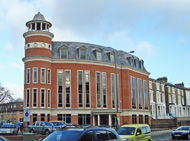
The site of the original Hospital at the junction of Widmore and Park Roads is now occupied with a new office block.
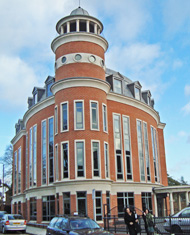
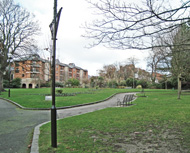
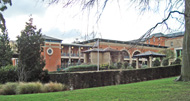

Looking across Queen's Gardens to the Glades Shopping Centre.

A history of the site is displayed in Queen's Gardens (above and right)
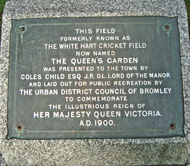
A plaque commemorating the donation of the land by Coles Child to the Council.
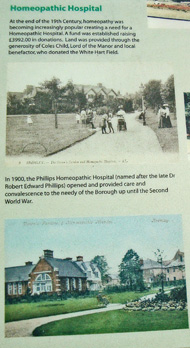
Detail from the history plaque featuring the Hospital.
http://homeopathy.wildfalcon.com
www.homeoint.org
www.ideal-homes.org.uk
www.kentvad.org
www.thebattens.me.uk
Return to home page